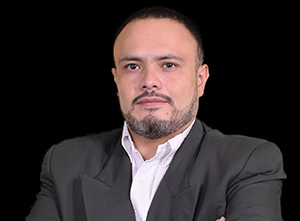Bolivia, bicentennial with economic crisis and hopelessness

By: Hugo Marcelo Balderrama - 04/08/2025
Guest columnist.Share:
In the 1990s, as a result of Gonzalo Sánchez de Lozada's capitalization program, Bolivia consolidated its position as a strategic player in the international energy market. Sadly, at that same time, the dark shadow of 21st-Century Socialism began its destabilizing operations in the country.
The highway robbers, led by Evo Morales, Oscar Olivera, Roberto de la Cruz, and Felipe Quispe, but supported by Cuba and Venezuela, bloodied Bolivia with the Water War in February and April 2000, the Cocaine War in January 2002, and finally, the Gas War in October 2003, which led to the overthrow of Sánchez de Lozada.
Once the coup d'état was consolidated, Carlos Mesa, who became president as a result of his disloyalty to Sánchez de Lozada and his shady dealings with the coup plotters, began the process of deinstitutionalizing the country. First, by granting amnesties to all the militia members and gang members who had participated in the overthrow, and second, by establishing a Constituent Assembly in favor of Evo and his Cuban and Venezuelan partners.
Evo Morales won the 2005 elections, but that wasn't a triumph for the indigenous movement, as he would have us believe, but rather the annexation of Bolivia into the club of 21st-century socialist dictatorships. We lost our homeland, we lost hope, we lost freedom.
Evo immediately applied the Sao Paulo Forum recipe: 1) deinstitutionalization of the Armed Forces, 2) centralization of the economy in the hands of the central government, and 3) modification of the Constitution.
The gas industry was the first to fall into the regime's clutches. The resources that entered the country from the sale of gas to markets in Brazil and Argentina amounted to approximately $47.142 billion, and no investments were made by the Evo Morales government. A golden decade was lost due to the boom in high commodity prices. However, Luis Arce Catacora, not far behind, followed in the footsteps of his predecessor and made no significant discoveries, resulting in a decline in gas revenues.
But not content with that, starting in 2014, they ruthlessly raided Bolivians' financial resources, amounting to $15 billion; they also seized $10 billion from workers' pensions in pension funds, and squandered $15 billion from international reserves. These are the reasons why Bolivia is currently facing a crisis due to a lack of foreign currency and fuel.
But it didn't end there. In 2000, the external debt amounted to $4.46 billion, while GDP was $8.411 billion. By 2005, the debt had risen to $4.941 billion, while GDP stood at $9.573 billion. The dramatic increase began in 2017, when debt to multilateral and bilateral organizations reached nearly $10 billion. According to figures from the Central Bank of Bolivia, medium- and long-term external debt reached $13.805 billion as of June 2025. Within these loans, multilateral creditors are the most important, led by the IDB, CAF, and the World Bank, while China stands out among bilateral creditors.
What were the consequences of all that waste?
Recent data from Bloomberg indicates that Bolivia has one of the highest risk indices in the region, at 1,801 points, surpassed only by Venezuela, which tops the list with 2,700 points. Regarding this, Juan Pablo Spinetto, investment expert at Bloomberg, states: "The Bolivian economy is on the brink of an unprecedented crisis, with imminent risks of devaluation and default on its external debt."
In conclusion, what should be a cause for celebration—turning two hundred years merits it—is, in reality, a misfortune, as Bolivians find themselves trapped by a criminal gang; suffering an economic crisis; and with a population that sees its future fading away.
«The opinions published herein are the sole responsibility of its author».